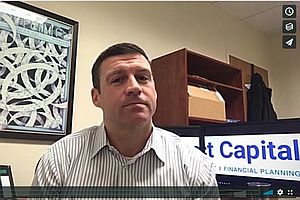
Most actively managed investment funds under-perform, and charge you high fees. At the same time, you pay taxes on capital gains, even if the fund performed badly. Low-fee exchange traded funds–ETFs–eliminate the high fees and taxes–that’s 3.5% you get to keep in your pocket. That’s the advice you need–Contact us at Impact Capital for the service you deserve.
- Underperformance data source: S&P Dow Jones Indices, LLC. Data as of June 30, 2018. https://us.spindices.com/documents/spiva/spiva-us-mid-year-2018.pdf Past performance is no guarantee of future results.
- Capital gains distribution data source: Barrons, “Your Mutual Fund is Costing You More Than You Even Realize”, 2/5/2019. Distributions may be different in the future. Assumed 15% capital gains rate.
—transcript—
Hi, It’s Bill Bancroft with Impact Capital, where we give you the advice you need and the service you deserve. Today, the advice you need is not to use actively managed equity mutual funds in a taxable account. I’ll give you two reasons why:
The first reason is that most funds do not beat their benchmarks—they underperform. Last year was a down year for the market—you would think it would be an easier bar for the funds to beat—but, in fact, 62% of U.S. equity funds still underperformed the benchmark last year. During the last 10 years, over 76% of the mutual funds underperformed their benchmark—it’s kind of a loser’s game. Quantifying this over the last five years, the performance gap has been about 2% per year—the average fund has underperformed the benchmark by 2% per year for the last 5 years.
The second reason is taxes. When the manager of a mutual fund makes trades—buys and sells stocks in an attempt to try and beat the market, and takes gains—he or she has to pass those gains through to you in the form of distributions, regardless of whether you’ve actually sold the fund or done anything. You could have been a buy-and-hold investor last year—and you would have lost money because the market was down—but you still would have been hit with capital gains distributions. At tax time, when you look at your form 1099, look at box 2A—that will tell you what capital gains distributions you’re having to pay tax on, even though you didn’t sell anything and you didn’t cause that to happen.
What’s the solution to these problems? At Impact Capital, we’re using low-fee index ETFs—or exchange-traded funds. ETFs match the benchmark, or come close to it, so it eliminates that 2% under-performance lag. The structure of the ETF also is different than a mutual fund—it doesn’t have the same capital gains distributions that a mutual fund has—and you eliminate that tax hit as well. If you’re eliminating the under-performance hit—that’s 2%—and you’re eliminating the taxes—that’s another one-and-one-half percent—that’s a total of three-and-one-half percent that you get to keep in your pocket.
That’s the advice you need—contact us at Impact Capital for the service you deserve.
###
STAY IN THE LOOP
